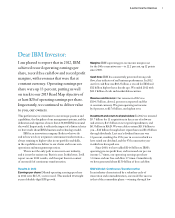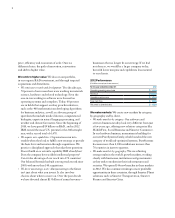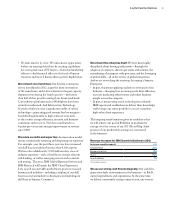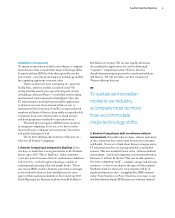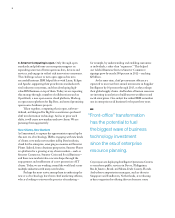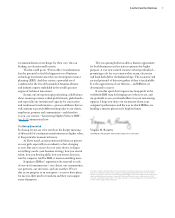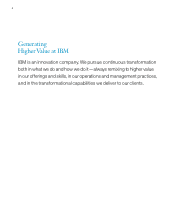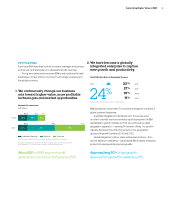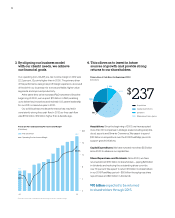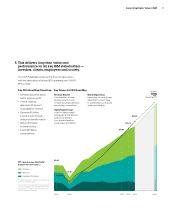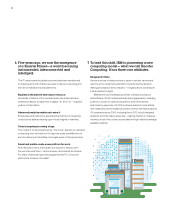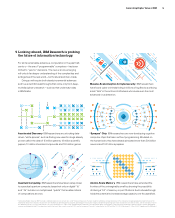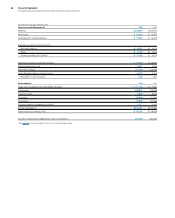IBM 2012 Annual Report Download - page 7
Download and view the complete annual report
Please find page 7 of the 2012 IBM annual report below. You can navigate through the pages in the report by either clicking on the pages listed below, or by using the keyword search tool below to find specific information within the annual report.
6
3. Smarter Computing is open. Only through open
standards and platforms can enterprises support an
expanding universe of heterogeneous data, devices and
services, and engage in today’s rich innovation eco systems.
The challenge is how to turn open approaches into
successful business. IBM helped do so with Linux, Eclipse
and Apache, supporting their growth into standards with
vital industry ecosystems, and then developing high-
value IBM business on top of them. Today, we are repeating
this strategy through a number of collaborations such as
OpenStack, a new open source cloud platform; Hadoop,
an open source platform for Big Data; and several promising
open source hardware projects.
Taken together, computing that is open, software-
defined, and designed for Big Data constitutes a profound
shift in information technology. And as in prior such
shifts, it will create new markets and new clients. We are
pursuing them aggressively.
New Clients, New Markets
As I mentioned, to capture the opportunities opened up by
this new era of technology, IBM is engaging with new kinds
of clients as we make new markets in Big Data/analytics,
cloud for the enterprise, emerging economies and Smarter
Planet. Indeed, from a business perspective, Smarter Planet
is a platform for a growing array of new markets
—
such as
Smarter Commerce, Smarter Cities and Social Business
—
and these new markets take concrete shape through the
engagement and enablement of a new generation of IT
clients. Today, we are working around the world and across
multiple industries with many new leaders.
Perhaps the most active among them in embracing the
new era of technology have been chief marketing ocers,
who are looking to reinvent the practice of marketing
—
for example, by understanding and enabling customers
as individuals, rather than “segments.” This helped
our Global Business Services Smarter Commerce
signings grow by nearly 200 percent in 2012
—
reaching
$2 billion.
At the same time, chief procurement ocers are
expected to increase their annual investment in Supplier
Intelligence by 30 percent through 2015, as they reshape
their global supply chains. And leaders of human resources
are investing in analytics to build smarter workforces and
social enterprises. One analyst has ranked IBM as number
one in enterprise social business for the past three years.
“Front-office” transformation
has the potential to fuel
the biggest wave of business
technology investment
since the era of enterprise
resource planning.
City mayors are deploying Intelligent Operations Centers
to transform public services in Davao, Philippines;
Rio de Janeiro, Brazil; and Miami-Dade County, Florida.
And urban transportation managers, such as those in
Singapore and Eindhoven, Netherlands, are reducing
urban congestion by oering drivers alternate route


